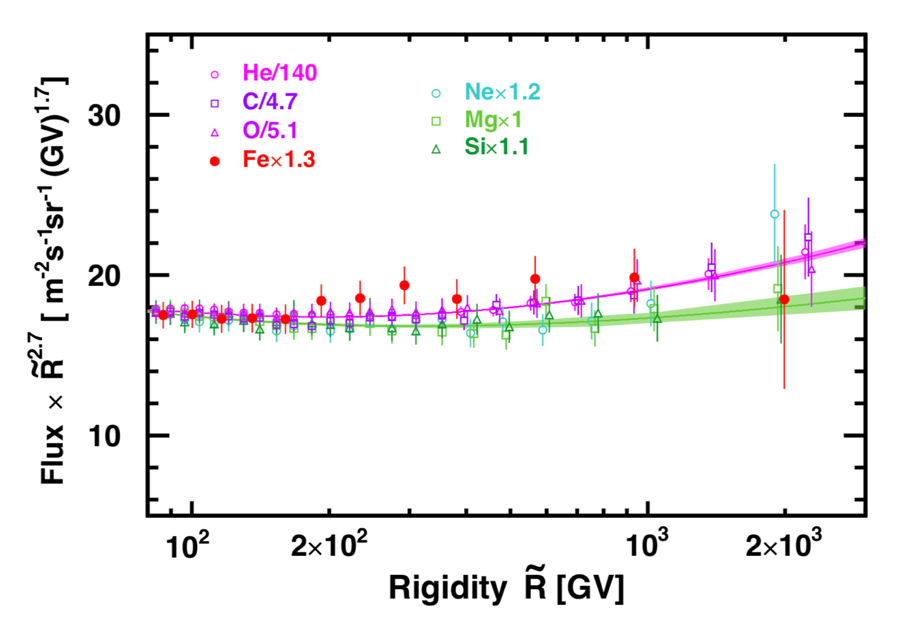A new mystery on the heaviest side of cosmic rays
The Alpha Magnetic Spectrometer (AMS) installed on the International Space Station since May 2011 has measured with percent-level accuracy the spectrum of iron nuclei in cosmic rays, providing for the first time the characterization of these very heavy cosmic-ray component.
Yet, the study of the rare heavy component is crucial in understanding the origin of cosmic rays. In particular, iron nuclei, as helium, oxygen, neon, magnesium and silicon nuclei, are mostly primary cosmic-ray nuclei produced in stars and then accelerated in supernovae explosions and released in the interstellar medium. Thus, the precision study of their spectra, that is their intensity as function of energy, provides information on the properties of their sources, of their acceleration and propagation mechanisms and of the properties of the interstellar medium.
In the past, AMS has reported the measurements of the spectra of cosmic-ray nuclei up to silicon, which have atomic number 14. These results, to which the AMS group at University of Geneva led by Dr Mercedes Paniccia has contributed, have revealed for the first time the existence of two distinct classes of primary cosmic rays: the light-primary class, to which helium, carbon and oxygen belong, and the heavy-primary class, to which neon, magnesium and silicon belong. Elements within each class exhibit identical spectral shape, while the two classes are characterized by distinctly different spectra.
AMS has now provided the first accurate measurement of the spectrum of cosmic-ray iron nuclei, which have atomic number 26, and are the most abundant very heavy nuclei. Surprisingly the iron spectrum is similar to that of the light primary nuclei, helium, carbon and oxygen, and is distinctly different (with 3s significance) from that of the heavy primary neon, magnesium and silicon nuclei (Figure 1).

Figure 2. The spectra of primary cosmic-iron nuclei, compared to the spectra of heavy primary cosmic-ray neon, magnesium and silicon, and to light primary cosmic-ray helium, carbon and oxygen nuclei. As seen the iron nuclei spectral shape resembles that of the of light primary nuclei.
These new results are the outcome of data analysis work performed by the AMS group at the Department of Nuclear and Particle Physics of the University of Geneva, led by Dr Mercedes Paniccia. Other independent analyses have been performed by the AMS groups at MIT (US), CIEMAT (Spain) and INFN-Bologna (Italy).
These new AMS measurements have been published in Physics Review Letters. The paper has been highlighted in the journal Physics.
February 1, 2021News
